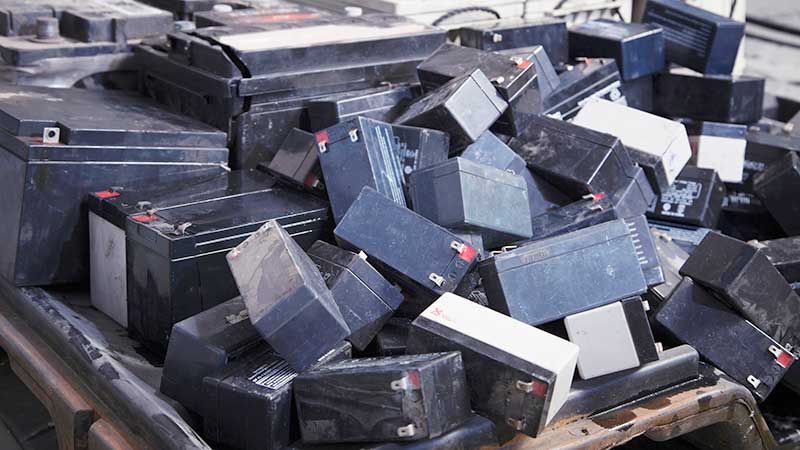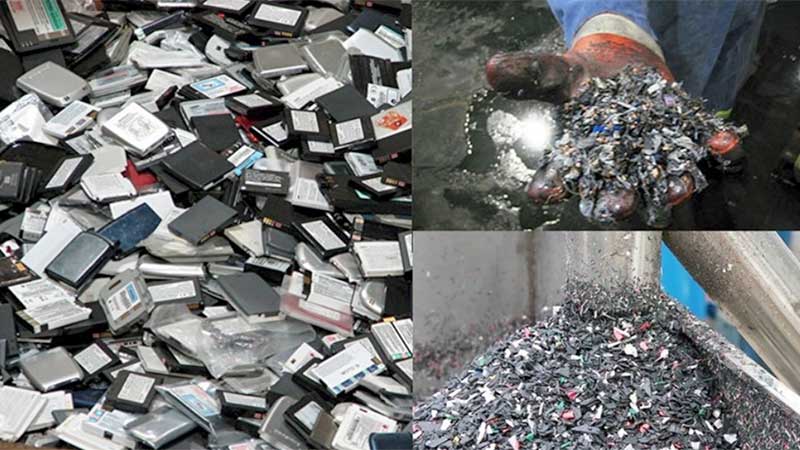Lithium battery recycling could become a $3bn opportunity and lower electric car prices

Rapid growth in electric cars and energy storage could create a new multi-billion-dollar industry for Australia and help drive down the cost of lithium-ion batteries, according to researchers.
Australia could lead the world in the re-use and recycling of lithium-ion batteries – an industry that will be worth upwards of $3 billion a year by the mid-2030s, CSIRO scientists said today in a report Lithium battery recycling in Australia.
The move could also help bring down the cost of electric cars and drive greater adoption in Australia.
Electric cars now account for 0.15 per cent of new car sales in Australia — in part due to high costs associated with expensive batteries. The forecast is that will grow moderately to 425,000 electric cars by 2030 — up from about 5000 now.
The CSIRO says an effective recycling industry could also stabilise global lithium supplies to meet consumer demand.
Only 2 per cent of Australia’s annual 3300 tonnes of lithium-ion battery (LIB) waste is recycled.
This waste is growing by 20 per cent a year, due to the rapid growth in demand for electronics and electric cars, and could exceed 100,000 tonnes by 2036, according to the CSIRO.

The economic loss to Australia amounts to between $813 million and $3 billion based on current commodity prices.
“LIB waste contains significant valuable resources like cobalt, lithium, base and other metals and graphite that could be recovered domestically and reused for new products,” the report states.
Both lithium and cobalt have been ranked by Geosciences Australia as critical in terms of strategic resource potential and opportunity for Australia to supply resources to meet the global demand for technology, the report says.
Over half the world’s cobalt production comes from the Democratic Republic of the Congo, which is the subject of serious concerns over armed conflict, illegal mining, human rights abuses and environmental issues.
New industry, extra value
If recycled, 95 per cent of the components can be turned into new batteries or used in other industries.
There is also the potential to recover other commodities such as copper, zinc, nickel, iron, aluminium and graphite.
Currently, the majority of Australia’s battery waste is shipped overseas, and the waste that is left in landfill can lead to fires and environmental contamination, the CSIRO says.
- Subscribe to our daily newsletter
- Bookmark this link for small cap news
- Join our small cap Facebook group
- Follow us on Facebook or Twitter
“The value for Australia is three-fold. We can draw additional value from existing materials, minimise impact on our environment, and also catalyse a new industry in lithium-ion re-use/recycling,” CSIRO battery research leader Dr Anand Bhatt said.
The federal and Western Australian governments have recently thrown their support behind the lithium sector with the establishment of a new taskforce, which aims to help Australia capture a greater share of the market.
The first order of business for the taskforce is to pull together a “roadmap on the future of the industry” over the next six months.
Australia captures only half a per cent of the lithium value chain — and needs to move downstream into processing if we are to benefit from the electric car revolution.
Industry commentators say the country needs to do that in the next 12 to 18 months before the window of opportunity closes.
UNLOCK INSIGHTS
Discover the untold stories of emerging ASX stocks.
Daily news and expert analysis, it's free to subscribe.
By proceeding, you confirm you understand that we handle personal information in accordance with our Privacy Policy.








